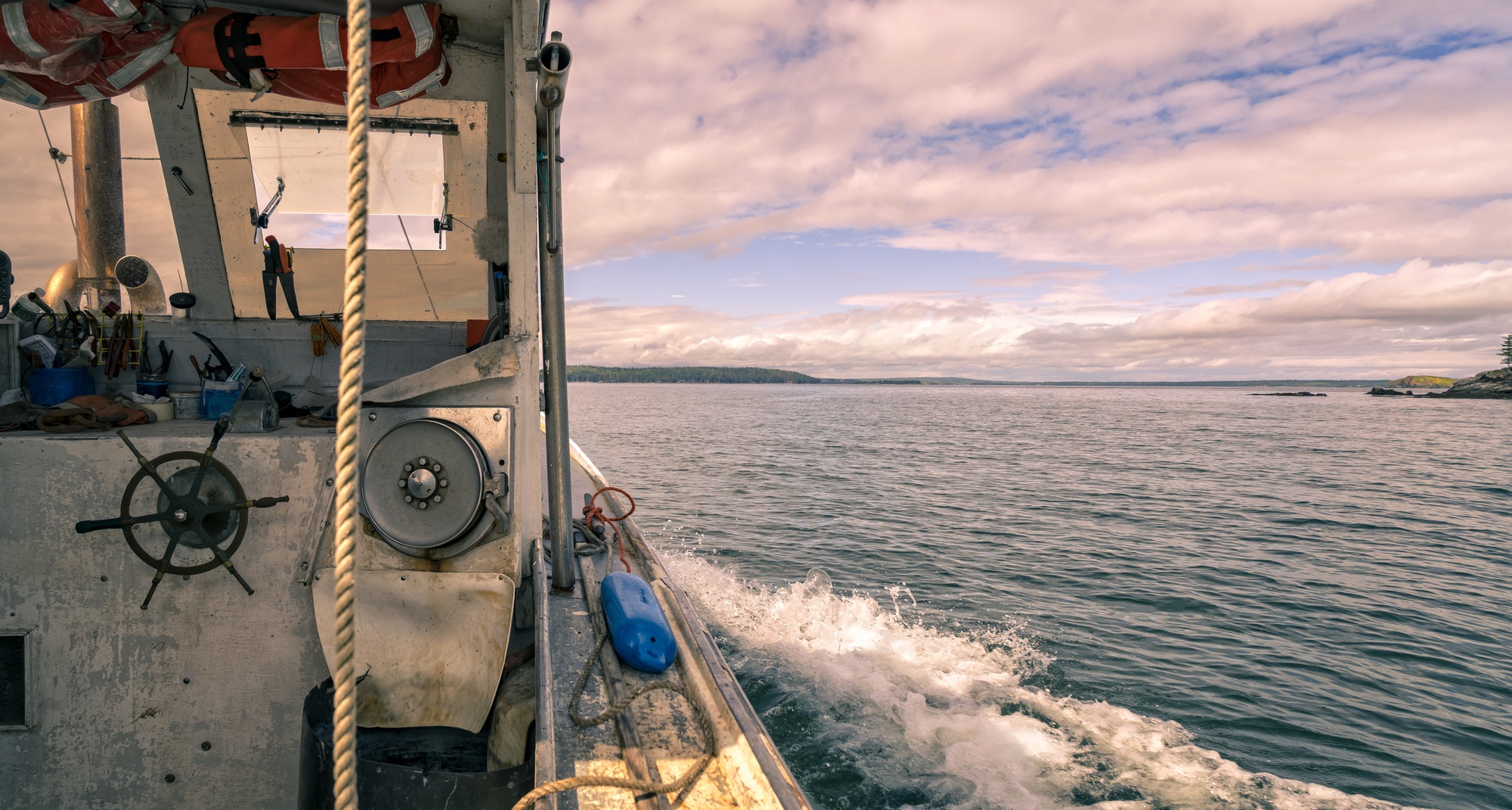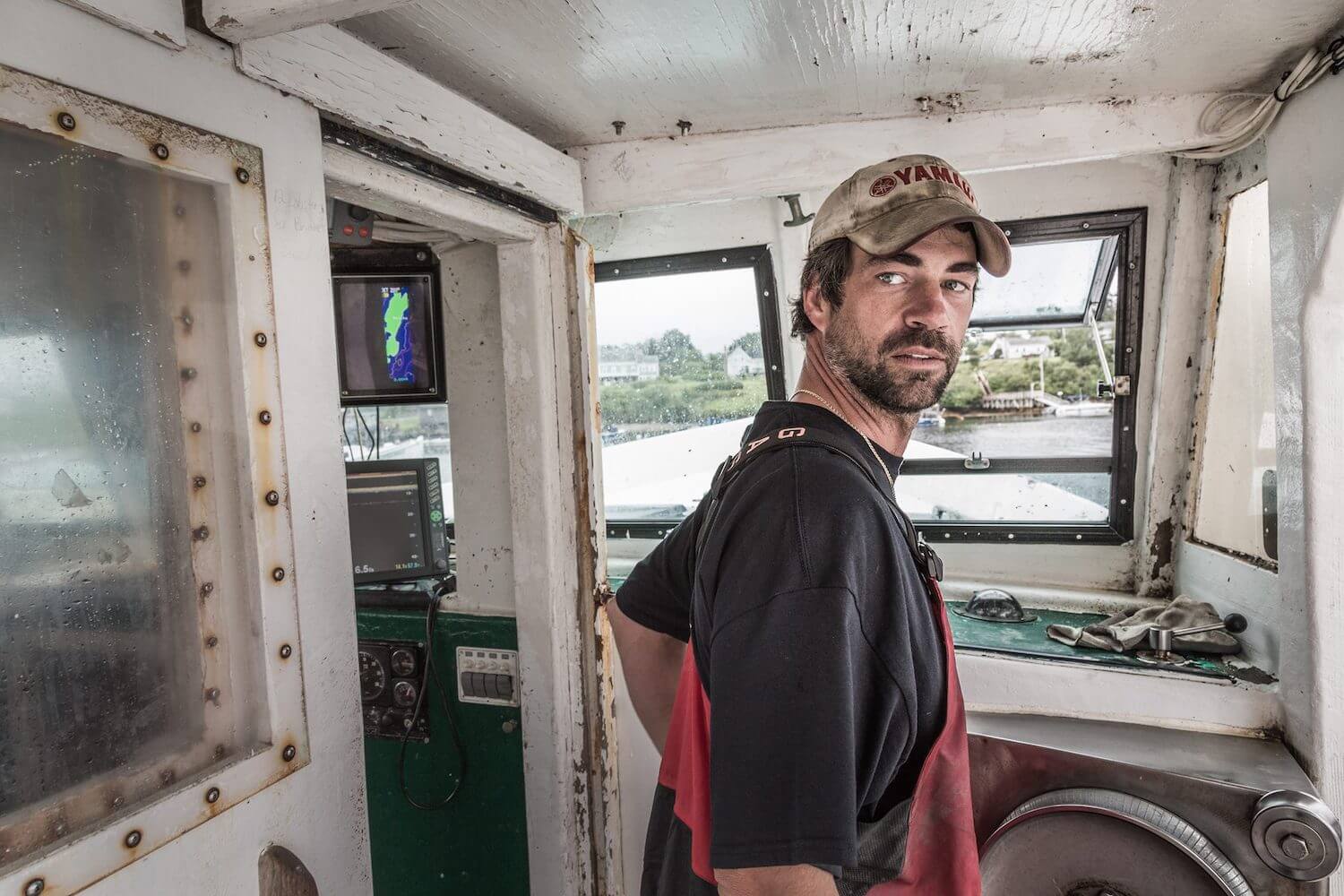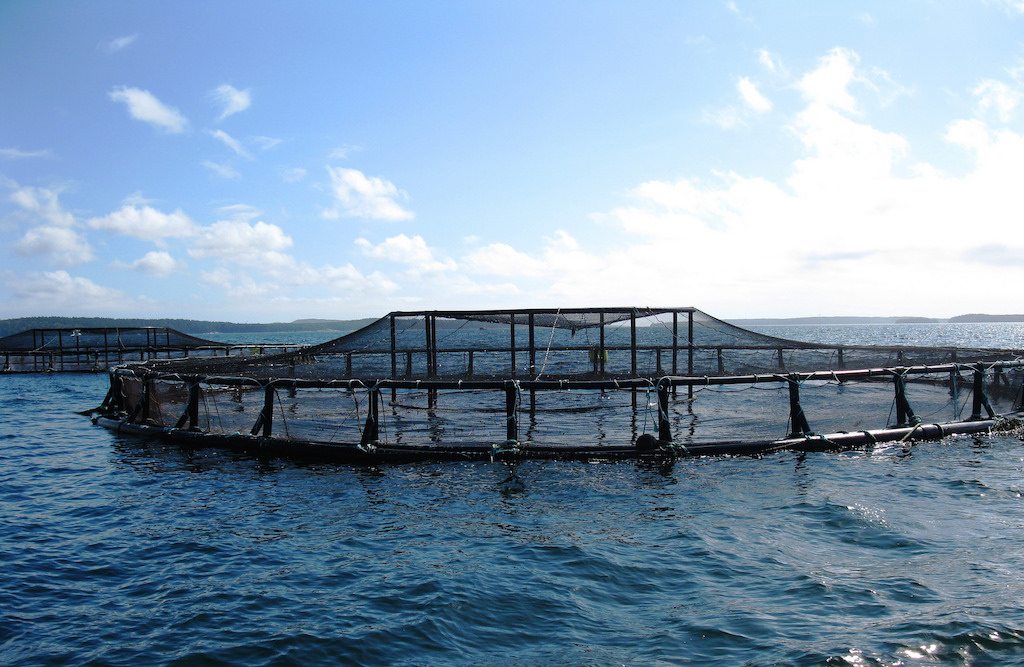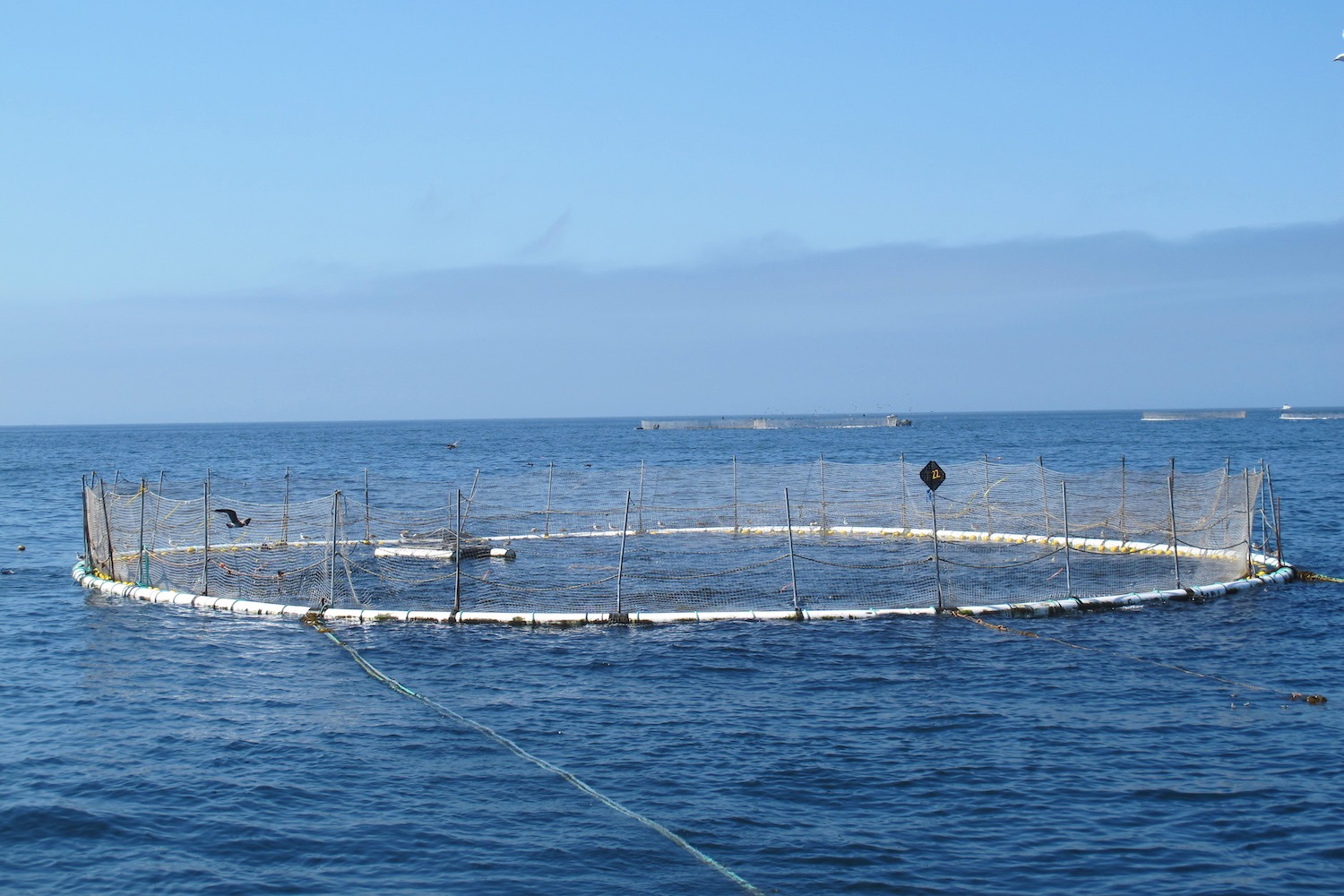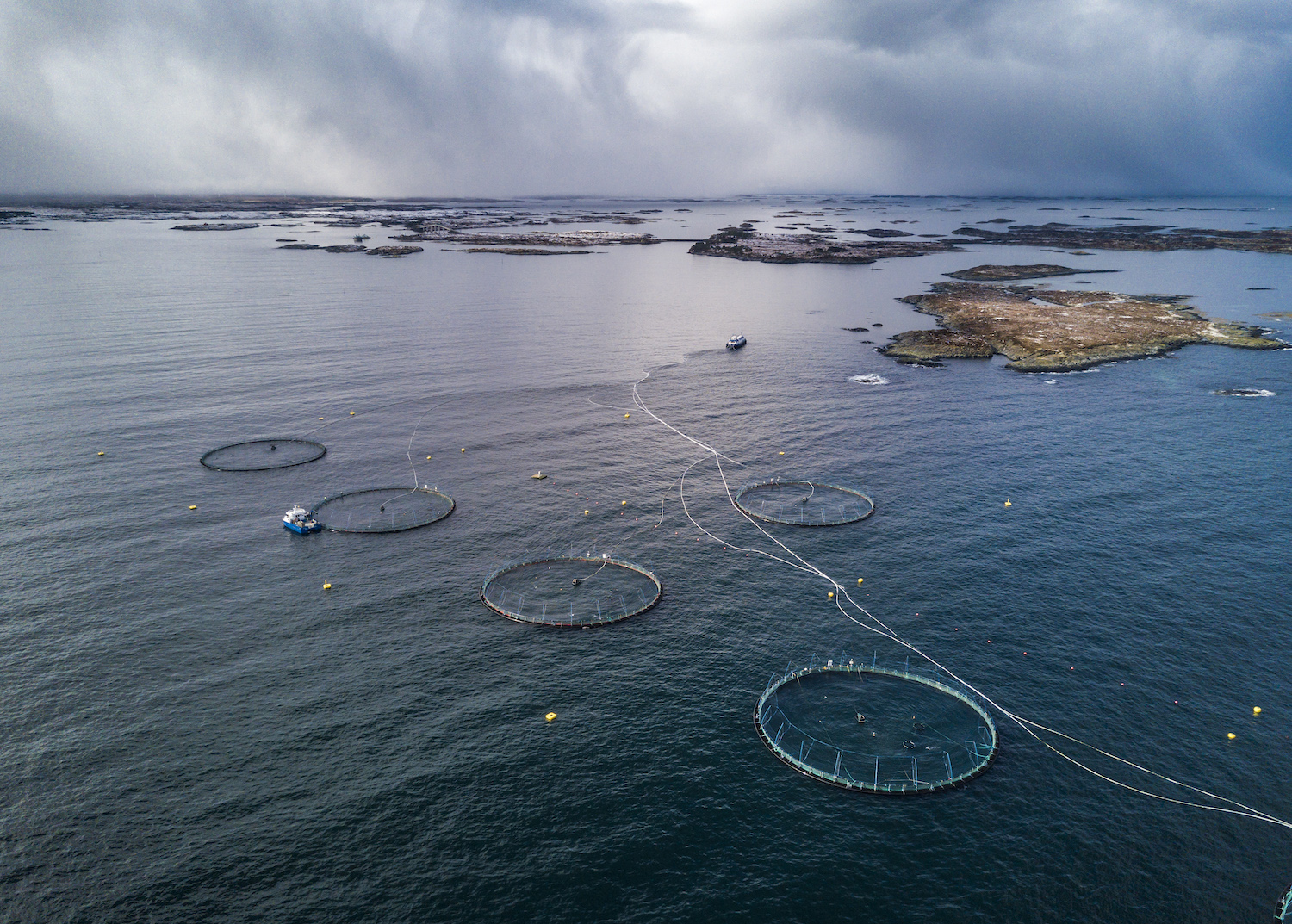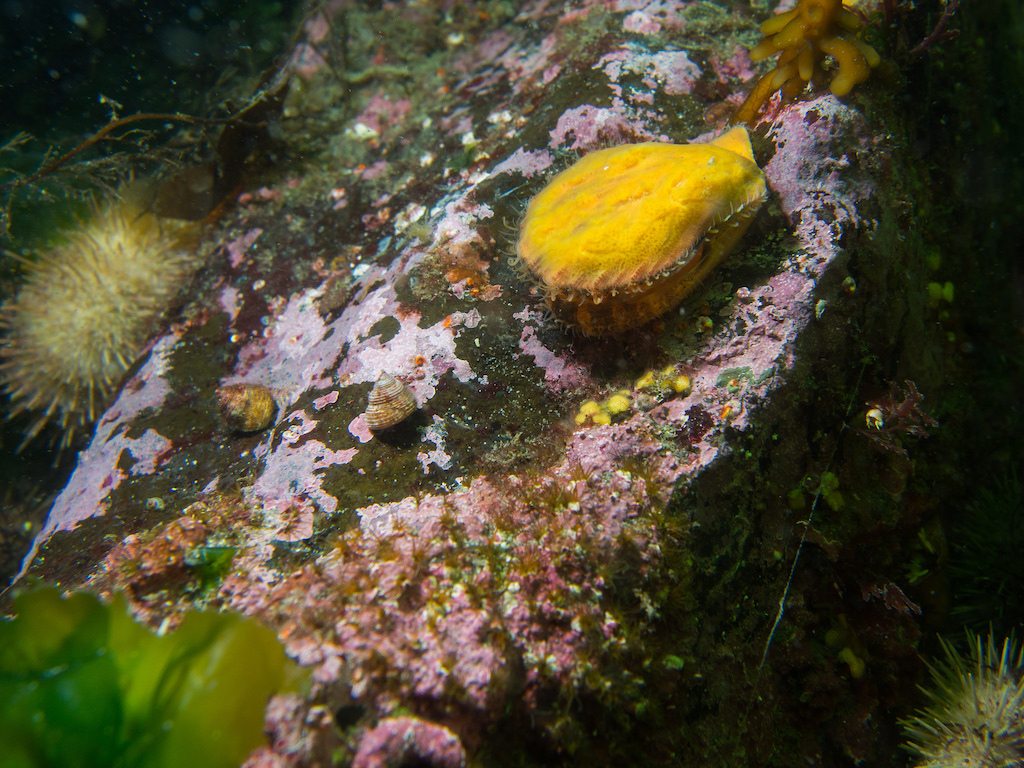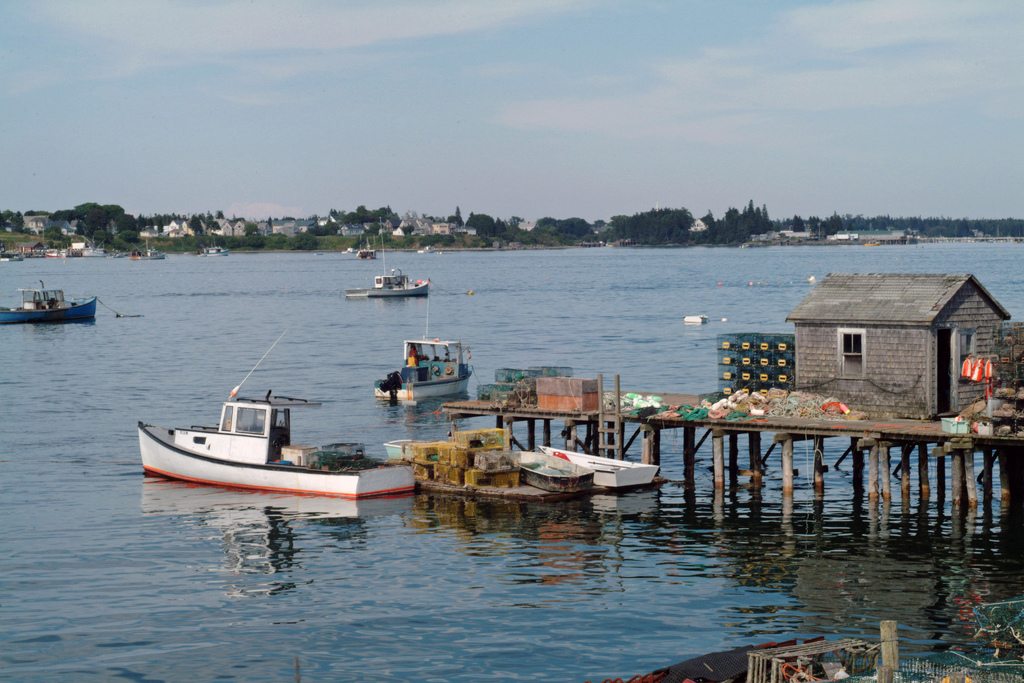As interest in farming the ocean takes off in the state, opinions differ about who gets to work the water—and how much of it.
With international and domestic corporations aiming to set up in its waters, the state of Maine is bullish on aquaculture’s potential.
And no wonder, considering that it’s managed to triple its annual aquaculture sales revenue between 2007 and 2017, to almost $138 million.
High-profile privately funded ventures have lately been converging on this corner of the North Atlantic. Millions in Shopify dollars and venture capital are backing Running Tide, a Portland, Maine-based oyster operation, in its bid to figure out how to use kelp as a carbon offset. Norwegian-owned American Aquafarms wants to raise 120 acres of salmon in Frenchman Bay, and other large Canadian and Dutch finfish aquaculture companies are moving into the region. Maine is collaborating with several states to build a national seaweed hub and, with $1.2 million from a 2019 NOAA Sea Grant, is opening its own aquaculture hub to support various sea-based farming industries.
This bustle, though, has raised the hackles of lobstermen and -women represented by grassroots Protect Maine’s Fishing Heritage Foundation (PMFHF) organization. They say large-scale aquaculture corporations are intent on “privatizing” the public ocean, in the process displacing locals who’ve fished these waters for years and endangering their livelihoods. They feel considerably less optimistic about the burst of interest in aquafarming in their local waters—and in particular, about the expanded terms of the leases that accommodate these operations; a single entity can now hold 1,000 acres, up from a limit of 300 in 2006, and the duration of those leases doubled, from a decade to 20 years, in 2017.
“[T]he fact that taxpayer-supported government organizations are providing financial help to those involved in aquaculture in our state creates a dangerous incentive for the industry to grow quickly and displace long-standing traditional fisheries and other ocean users.”
“Aquaculture certainly has a place along the coast, but the scale of some of the proposals out there is just too big,” wrote longtime lobster- and fisherman Ernie Burgess in a Portland Press Herald opinion piece. In the September 2019 piece, he described how numerous aquaculture mooring lines and cages ensnare lobster traps and make fishing around them a physical impossibility. “[T]he fact that taxpayer-supported government organizations are providing financial help to those involved in aquaculture in our state creates a dangerous incentive for the industry to grow quickly and displace long-standing traditional fisheries and other ocean users,” he wrote, referring to federal grants backing the state’s aquaculture pursuits.
Although some of Maine’s fishermen engage in aquaculture as an additional source of income—especially as overfishing and the warming of the Gulf of Maine have caused cod to dwindle and lobster to skedaddle for cooler climes—the scale of their operations is comparatively very small, mostly falling under 5 acres.
Larger operations are “a very big social change in these coastal communities,” said Jon Lewis, retired director of Maine’s Department of Marine Resources (DMR) aquaculture program, the office that grants the aquaculture leases, and a former PMFHF consultant.
Aquaculture itself is actually nothing new. Pond-to-table carp may date back 4,000 years. But its growing scale—and the expectation that it can meet even some of our vast food, energy, and decarbonization and other ecosystem needs—certainly is. Almost 90 percent of the world’s eaten bivalves are now raised, for example, and many countries are planning to ramp up existing efforts.
Concerns around this are broader than just the impacts on Maine lobstermen’s ability to trap tasty crustaceans. With heat waves and drought currently devastating some land-based agriculture, questions still abound about the possible harmful impacts of scaling up fish, mollusk, and kelp farms: Too much pollution? One species outcompeting others? Upticks in disease? Altered wave energy? Something—lots of somethings—else?
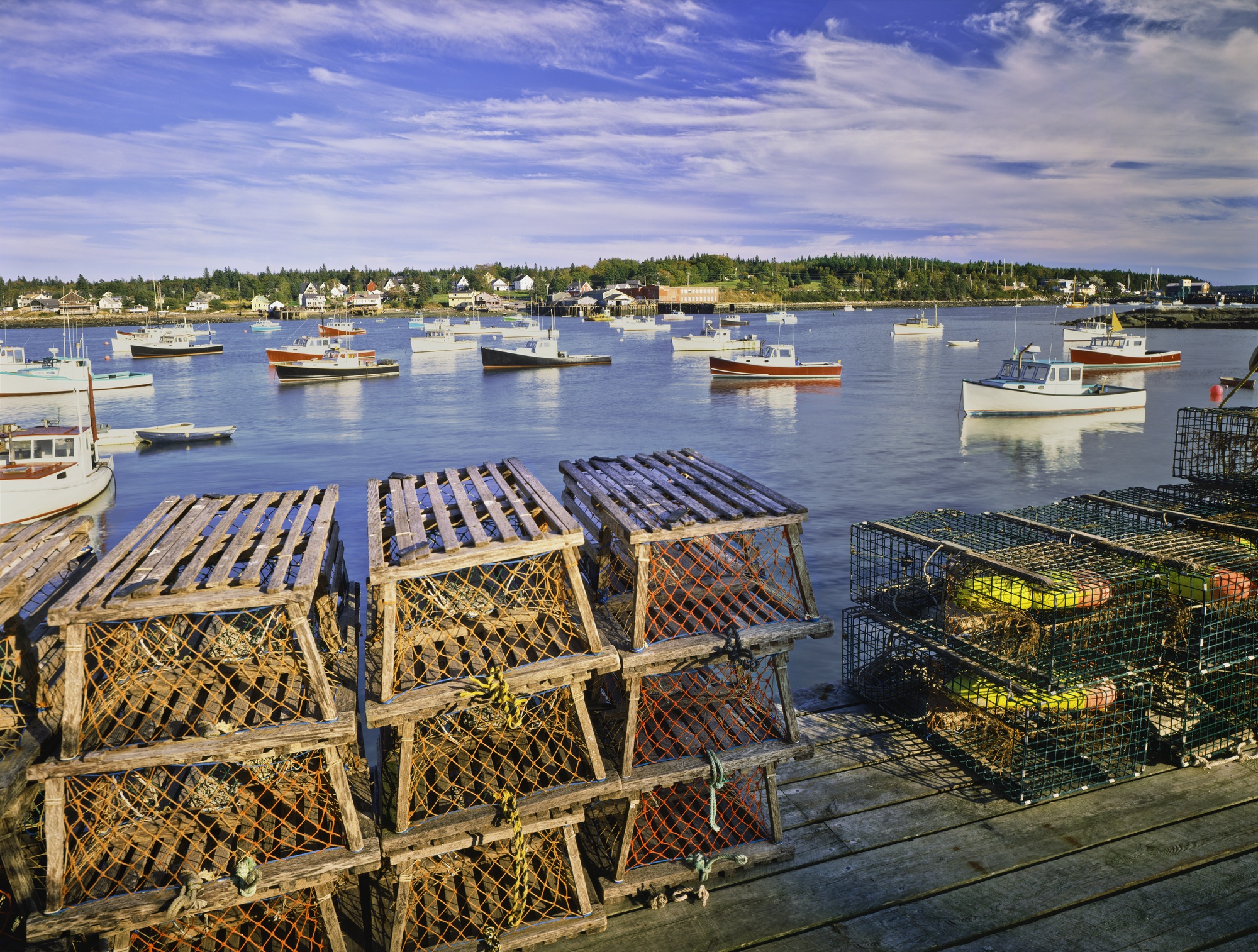
Although some of Maine’s fishermen engage in aquaculture as an additional source of income—especially as overfishing and the warming of the Gulf of Maine have caused cod to dwindle and lobster to skedaddle for cooler climes—the scale of their operations is comparatively very small, mostly falling under 5 acres.
University of Maine oceanographer Damian Brady said there could be unintended consequences of, say, massive kelp farms, but “the fundamental tension in all this is that it’s up to the stomach of the public, how risky they think not doing something [to tackle climate change] is at this point.”
Some impacts are already known or hinted at. Advocates for finfish farms say the industry cleaned up its act since early days in the ’70s and ’80s, although fish escapes, waste, and pesticide use to treat parasitic sea lice continue to be problems. For a would-be-massive seaweed grower like Running Tide, which aims to raise carbon-sucking kelp on vertical lines, entangling endangered North Atlantic right whales is a big issue, at least off the coast of Maine. So is what would happen to the surrounding ecosystem when kelp is (theoretically) submerged and continues to consume oxygen as it lies on the seafloor. Even farmed oysters, largely considered an ecosystem win because they clean water, can alter seagrass lifecycles to the potential detriment of shore birds.
As aquaculture takes off in Maine, Lewis believes many of his neighbors are “not necessarily agreeable to outside corporate control of a large swath of the ocean and feel disenfranchised from the process” of industry expansion in their backyards.
The number of acres under a standard lease in Maine has not exactly exploded over the last 12 years—DMR data shows a modest rise, from about 1,300 to about 1,450 acres in that period—and most leases are pretty minuscule. But of concern to some are the size of the licenses requested by American Aquafarms, and the 24 leases held by Cooke Aquaculture for finfish, blue mussels, and clams, which total 614.14 acres. Also writing in the Portland Press Herald, on July 23, American Aquafarms’ CEO Mikael Roenes asserted that the company’s closed pens controlled waste, prevented escapes, and eliminated the “threat of sea lice.”
“The fundamental tension in all this is that it’s up to the stomach of the public, how risky they think not doing something [to tackle climate change] is at this point.”
To Lewis’ mind, the push to use the ocean for ecological fixes may be necessary, given current climate woes. But the speed with which aquaculture leases are increasing is “starting to get out of control,” he said.
He points to the marked increase in what are called limited purpose aquaculture licenses (LPAs), which are for plots measuring only 400 square feet. The current acting director of DMR’s aquaculture division, Marcy Nelson, said that LPAs are reviewed by her staff and that landowners within 300 feet of a proposed LPA are given the opportunity to comment on them.
But according to Lewis, criteria for LPAs are less stringent than for standard leases, there is no published public notice for them, and if an LPA is just an extra foot away from shore, “the communication link between the town and the public fails to occur,” he wrote in an email.
LPAs are indeed proliferating, with 722 currently active (there were 450 in 2015). “The best way to describe these LPAs is sprawl,” wrote Lewis. “Other [ocean] users have been surprised when they suddenly pop up in the water.”
The lobstermen represented by PMFHF want their own fishing and aquaculture needs to be prioritized by the state. “Let’s talk about planning for the coast and how we’re going to do it,” said PMFHF executive director Crystal Canney, who said the lobstermen she represents, some of whom live in isolated locations with poor access to the internet, have been caught off-guard by some of the leasing changes.
There’s another issue among locals, according to Pat Burns, who started a cooperative in 2019 of (now) 10 oyster farmers who share two leases in Robinhood Cove. And that is fear of further industrial encroachment and consolidation.
“What’s to keep [our co-op] from cashing out and selling to a corporation?” he said. “Philosophically, we’re not in that court. But could someone do it? Yes.” Lewis wrote that “the public sees this as speculative, where the larger leases will be sold to the highest bidder.”
But he said there’s an actual danger of this happening, since standard leases can be transferred without a public hearing, which is another thorny topic in these parts.
A major concern for him is that there isn’t enough regulatory oversight to ensure that aquaculture operations aren’t causing more harm than good. By way of example, he mentions the “birdfeeder effect.” This occurs under finfish pens, when other fish swim over to eat fallen feed; in a well-managed farm, there’s usually species diversity, while one that accumulates too much urine and fecal waste can result in a barren sea bottom—a situation that used to be monitored by DMR divers but was curtailed when the department’s Finfish Aquaculture Monitoring Program was transferred to the Maine Department of Environmental Protection, according to both Lewis and Nelson.
“You need a commensurate investment in regulatory oversight to build public confidence,” Lewis said, and “nobody knows what farm conditions are under the net pens.”
“You need a commensurate investment in regulatory oversight to build public confidence. Nobody knows what farm conditions are under the net pens.”
When it comes to seaweed farming—at least for decarbonization effects and biofuel, both of which would require enormous acreage to make any impact at all—Jaclyn Robidoux, a Maine Sea Grant marine extension associate who works with seaweed, said the industry is a long way from getting to that scale.
“Probably 97 percent of the farmed seaweed that comes out of the water in Maine is going into” packaged foods, she said; with a few exceptions, most kelp farmers have licenses for plots that are around 5 acres. “Even though we’re talking about those other uses, they’re still in the research and development space, and there are very few farms that have been operational long enough to get data to determine what the carbon sequestration value of a kelp farm would be,” Robidoux said.
Nevertheless, as interest in aquaculture continues to grow, some people see greater chance of confrontations between locals and corporate entities, especially if they’re “from away.” The hub is working to address some concerns, but Lewis said the general public and aquaculture dissenters have largely been left out of the conversation.
“Historically, the way Maine worked was that people had local skin in the game and had to face their neighbors and say, ‘Sorry I screwed up, I’ll fix it,’” he said. “That’s changing quickly.”
